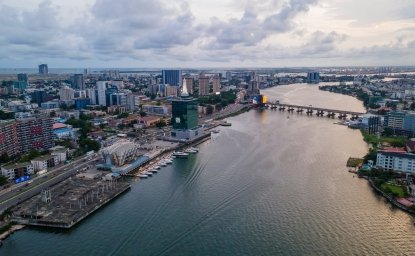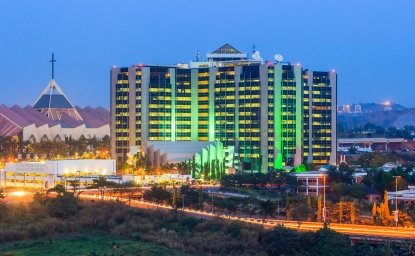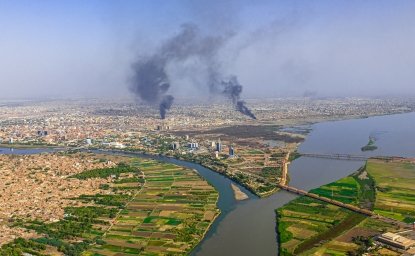All is on the Table
A few major aspects of mining contracts exist which have an enormous influence on how government and communities are impacted by mining initiatives. These are crucial to setting the tone for future projects.
African Value Addition / Local Content in Projects
The discussion around valuation has reached the level of a scream shrill. China has apparently banned the export of technology that would add value to minerals. In Africa, at least two countries, Ghana and Namibia, have moved to ban exports, and countries across the continent generally have much more assertive mineral extraction policies than in times past. Beyond the headlines, what can countries do to ensure that value addition, the production of goods and services in the country—particularly those related to the energy transition—takes place? Education—developing technical, financial and legal experts for the coming generations—is imperative. Additionally, training significant numbers of people and supporting placements in foreign companies to build experience and capacity would be a start. Investing in internationally recognized education, including campuses in country, is also important. If investors bring funding and know-how, governments can provide facilities. Mineral valuation doesn’t just happen—it’s a give and take.
Measuring local content is an art and a science. In valuation, a big aspect is the amount of tons of product processed before being exported. Other aspects of local content to be measured include people as a percentage of the workforce, domestic financial investment, number of hours spent on a specific project piece by African citizens and number of cubic meters of cement, or kilometers of steel procured locally. For example, if a rail is built, what is the origin and standard of the steel, the concrete ties, and even the rocks for track ballast?
Infrastructure
Almost all mines located in African countries are in geographical peripheries and thus need accompanying infrastructure (road or rail) to be upgraded or built. Governments should keep several key questions pertaining to infrastructure in mind when they negotiate mining contracts:
- Who owns the infrastructure, how is it maintained, and how is access allocated (now and in the future should another mine be developed)?
- Do roads pass through communities and are there protocols for when and how much they are used, and are these rules strongly enforced? How feasible is a bypass road that reduces pollution, dust, and casualties?
While a mining company may build a railway, the government should negotiate access rights for potential third parties (with proper compensation), as well as access upon completion for local communities.
Renewables
Mines require energy which, in most cases, is generated through fossil-fuels (coal or oil/diesel). However, given the incredible potential supply of solar energy in Africa, greater consideration should be given to renewables as a portion of the operation’s energy source. Renewable energy sources will not be able to provide all of a mine’s power, but could cover a good share.
With renewables employed at mines, and ideally for nearby communities, energy poverty can be addressed immediately. The installation time and costs of renewables, particularly solar, are much smaller than fossil-fuel based energy sources. This is important as the 2015 Paris Agreement negotiations were largely led by officials from capitals, and not by those from more rural areas. Solar in rural areas would help reduce the disconnect between what was negotiated in Paris and the realities in less developed areas.
Innovation
Automation is happening and provides an excellent opportunity for a country to ride the technology wave. However, it will have an impact on jobs. It is important to consider questions such as: how are cost savings through technology negotiated into the agreement and who takes the bulk of the associated profits and is there compensation and training for a retrenched workforce?
Foreseen Circumstances and Unforeseen Imperatives
Scenarios – “memories of the future”
Government, companies and civil society could create scenarios to better understand a mine’s ramp up and how it will impact local and regional development. Scenarios help the national government, as well as the company and communities, prepare for dramatic changes such as migration creating fence-line communities, pressure on health and education services, and pressure on infrastructure, to start. What processes, regulations and human resources should be in place to ensure that planned development takes place? Doctors? Civil servants? Teachers? In short, everyone is needed to make a city function. In their future budget allocations, national governments should keep in mind what the required budget allocation will be to meet its regional and local commitments.
Climate Change and Resilience
Many African countries are being hit with the impacts of a changing climate – migration and food production to name two. Given that many mines are enormous sources of revenue for countries, sufficient resources – financial and human – should be put aside to ensure a mine’s continuity of operation and production, no matter the circumstances.
Mines as Force Multipliers
These aforementioned contract priorities can serve as force multipliers for not just mining, but also for other extractive sectors and for infrastructure development. The spillover effect from mining would be seen in education, innovation, investment, and standards. The country’s “tone” would be set at the mine (in the contract) and send signals to potential investors and to other ministries. And when governments don’t have enough negotiation expertise, they should use negotiation support facilities. No government can do it alone and there is much riding on these negotiations.
More than 100 years ago, William Mulholland opened up the Los Angeles Aqueduct – one of the world’s most influential pieces of development infrastructure – and, in so doing, he began the transformation of a desert into a metropolis. During its inauguration, as the initial cubic meters of water surged through the aqueduct, Mulholland shouted; “There it is. Take it!”
Today, Africa is blessed with a similar opportunity, which could have as much or even greater impact as that of the LA Aqueduct for California, which is now the world’s fifth largest economy.
So, Africa, there it is. Take it.
AUTHOR NOTE: This blog represents the author’s own personal views, and not the views of the CONNEX Support Unit, its Board, its Advisory Committee or its funders.






